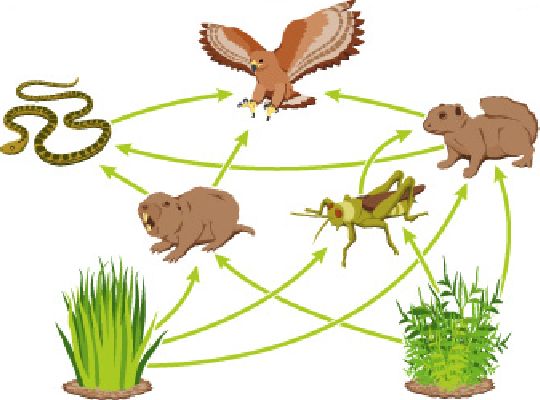 A food web
A food web
The flow of energy in an ecosystem may not be a linear chain from small to large organisms,
but may follow a complex web of consumption.
Some consumers may have two-way trophic relationships with other organisms:
some birds feed on snakes, while some snakes raid bird nests.
These may be the same 2 species at different stages in their life cycle.
- Can a snake eat a hawk?
- Yes, especially when the hawk was an egg or chick.
 Ecosystems, communities, and species interactions
Ecosystems, communities, and species interactions 
 Ecosystems, communities, and species interactions
Ecosystems, communities, and species interactions 